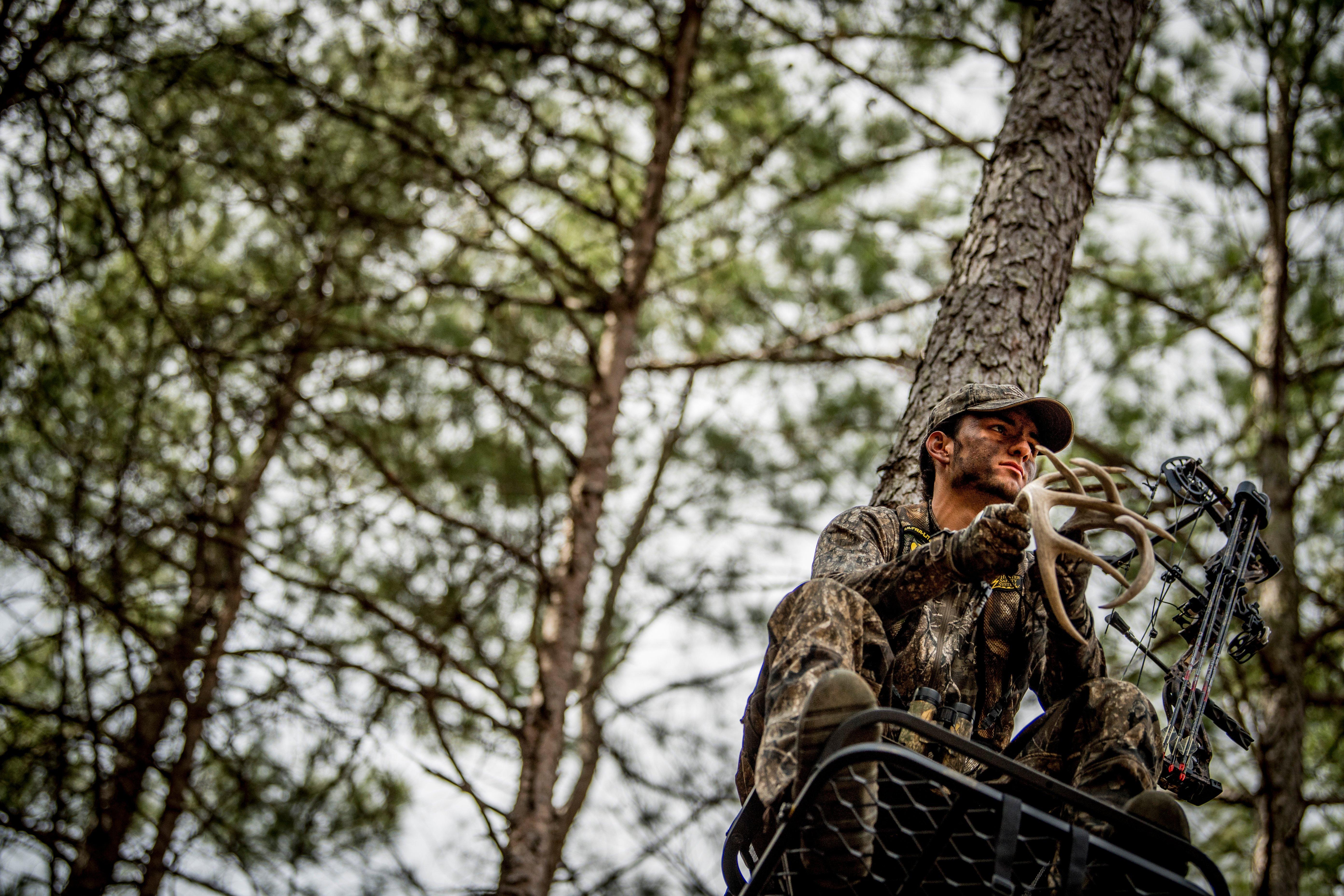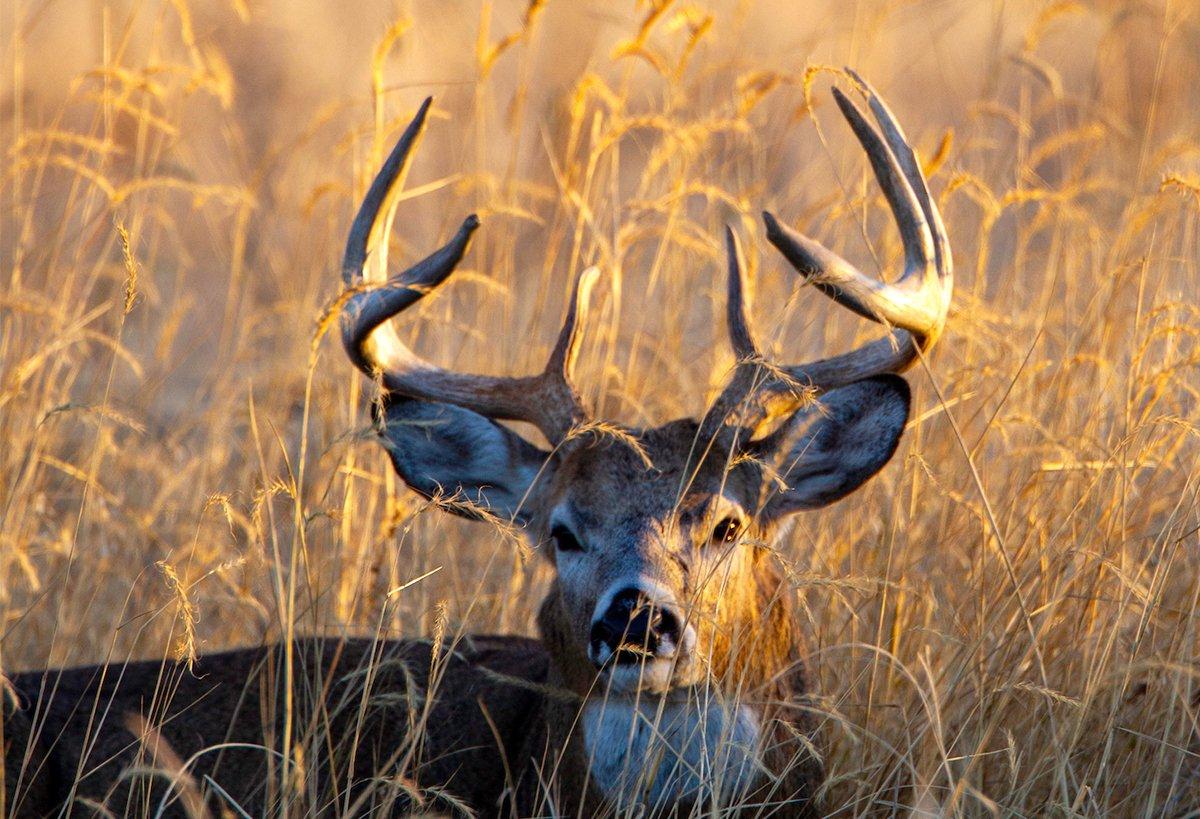These three stops all have over-the-counter tags and great potential for shooting a trophy buck
For a Do-It-Yourself hunter, nothing beats the simplicity of traveling to another state, buying a deer tag over the counter, and then going to the woods. There are plenty of places for us DIYers to hunt like that and probably get a shot at a deer, too. But not as many have strong trophy potential. A 2 1/2-year-old 8-pointer is cream of the crop for most public-land hunting in states like New York, Tennessee, and Pennsylvania.
If your personal standards are a bit higher than that — maybe you're after 3 1/2-year and older bucks — you might be facing long odds in most OTC states, at least on public lands. But shooting a mature buck on public land is within the realm of possibility in a few places, for hardworking hunters. These three states — all with OTC tags —have proven that they can regularly produce mature deer, and have some good public hunting to boot.
(Don't Miss: 10 Things You Didn't Know About Velvet Bucks)
Ohio
The Buckeye State keeps my social media newsfeeds as hot with big-buck pictures as draw states like Iowa and Kansas. That's remarkable considering how affordable it is to hunt there. A nonresident needs a $180.96 (adult) annual hunting license and a $76.96 (adult) either-sex deer permit.
The challenge with Ohio is that 95.8 percent of the state is privately owned (according to summitpost.org). Comparatively, Minnesota, another OTC state, is 76.5 percent privately owned. But while Ohio has a limited amount of public lands, finding a good spot requires only some research and a positive attitude.
(Deer Hunting in Ohio / Realtree Antler Nation)
The 4,490-acre Tranquility Wildlife Area located in Adams County features an ideal mix of habitat including ponds, timber, the Ohio Brush Creek, and agriculture throughout the tract. There are crops on adjacent private lands, too. If that isn't enough room for you to roam, check out the huge Shawnee State Forest — nicknamed Ohio's Little Smokies — which encompasses more than 60,000 acres of big-timber habitat that fringes the north bank of the Ohio River and is managed for sustainable timber and wildlife.
More than 250,000 acres make up the Wayne National Forest, which creates a patchwork pattern in southeastern Ohio in the Appalachian foothills. Tent camp in the backcountry or bring your travel trailer or RV and stay at a designated campground. Deer densities are generally a bit lower here than on farmlands, but the patient hunter might shoot a giant.
(Story of a 195-Inch Crossbow Buck)
According to the National Deer Association's 2021 Deer Report, Ohio hunters bagged 80,138 antlered bucks during the 2019 hunting season, 28 percent of which were 3 1/2 years old or older, suggesting that Ohio hunters are pretty selective. Bowhunters get months of opportunity, as archery season opens Sept. 25 this year and closes Feb. 6, 2022. Gun hunters catch the post rut with a Nov. 29 through Dec. 5 season. And muzzleloader hunters get four days to make it happen in early January.
(Buy Alert: 23" EZ Hanger + Arrow Puller Combination 2 Pack)
Oklahoma
The Sooner State has incredibly diverse whitetail habitat. There's big timber and the Ouachita Mountains to the east, and red dirt hills, sage brush, shinnery oak, and mixed-grass prairie to the west. Everything between is a mix of prairie with thickets, riparian, and agricultural habitat interspersed.
Oklahoma's Department of Wildlife Conservation manages nearly 90 wildlife management areas all across the state. Many of them feature superb deer habitat with naturally occurring foods supplemented by state-cultivated food plots with plantings such as corn, soybeans, and winter wheat.
(Deer Hunting in Oklahoma / Realtree Antler Nation)
Several WMAs are worth looking into. Out west is the 19,659-acre Packsaddle WMA in Ellis County, which offers mixed-grass prairies, sand-plum thickets, sagebrush, elms, cottonwoods, and hackberry. On the southern fringe is the famed South Canadian River. Native forages abound, and multiple small food plots provide additional wildlife food. Water sources in the form of ponds, guzzlers, and windmills are present throughout. Primitive camping is allowed in designated areas, but motel lodging is within reach of the WMA.
If big timber is your cup of tea, some mountain monarchs roam the Ouachita Mountains and surrounding areas of Eastern Oklahoma. Deer densities and buck quality are excellent on the Three Rivers and Honobia Creek WMAs. Also, the Ouachita and McCurtain County WMAs are in the same vicinity, providing additional hunting opportunities. You could hunt these areas for a lifetime and not cover them entirely.
Oklahoma's nonresident deer licenses are reasonably priced at $280. What's more, they allow hunters to take up to six deer (season limit), two of which may be antlered. A lengthy archery season runs Oct. 1 through Jan. 15. A pre-rut muzzleloader season runs Oct. 23-31, and a gun season runs Nov. 20 through Dec. 5. During the muzzleloader hunt, hunters can only kill one buck, likewise with gun hunters.
(Sooner State Buck Story: Madison Donihoo's Giant Youth Season Buck)
The NDA's 2021 Report shows that Oklahoma hunters bagged 64,364 antlered bucks in 2019, and a staggering 64 percent of them were 3 1/2 years old or older. It doesn't mean that monsters lurk behind every Sooner State sage clump, but it does mean that shooting a buck in that age class is entirely possible. A good many public-land hunters do it every year.
(Don't Miss: 7 Different Deer Taxidermy Options and Their Costs)
Missouri
The Show Me State is surrounded by big-buck heavyweights Iowa, Kansas, and Illinois, but in Missouri, nonresidents can snag an OTC hunting permit. With it, archers are allowed to take two deer of either sex, but only one antlered buck prior to Nov. 16. Firearms hunters are allowed one deer of either sex. Archery hunters get to start in September, hunting unpressured deer through the beginning of the rut. Then, gun hunters get prime rut dates, with rifle season running Nov. 13-23 this fall.
If you want to hunt farmland habitat, a limited number of state parcels can be explored in northern Missouri just below the Iowa border. Given the location, though, you could have lots of company during the first and second weeks of November. If larger public tracts like the 5,596-acre Union Ridge Conservation Area are busy, don't overlook smaller tracts like the 1,638-acre Charlie Heath Memorial Conservation Area, which has great whitetail habitat with agriculture on the north end, lots of timber, and Fox Creek covering the center and eastern portions, not to mention abundant agriculture on adjoining private lands. Fox Valley Lake Conservation Area — lined by Linn Creek on the north, covered by timber in the center, and planted with agriculture at the south — is another small one to keep in your back pocket.
(Deer Hunting in Missouri / Realtree Antler Nation)
If you want to get close to Kansas, there are fewer options, although the Four Rivers Conservation Area and Bushwhacker Lake Conservation Area provide generous deer habitat and ample room to stretch your legs.
About 50 miles south of Jefferson City is the colossal 1.5-million-acre Mark Twain National Forest. This is big, rugged country that even features wilderness areas. The forest has some large, multi-thousand-acre sections, but also has smaller blocks, creating a patchwork of ground covering more than two dozen counties that you could hunt on and explore for a lifetime without covering all of it. To find deer, utilize onX Hunt's Timber Cuts layer to unveil recent logging operations where deer will be feeding on regrowth.
Back to the NDA 2021 Report, Missouri hunters harvested 134,092 antlered bucks in 2019, of which 29 percent were 3 1/2 years old or older.
(Buy Alert: Realtree EZ Crossbow Holder)
Conclusion
Although Ohio, Oklahoma, and Missouri all have big bucks and OTC licenses in common, don't expect an easy hunt. Remember, all OTC hunts are subject to heavy hunting pressure. Also, while researching hunts, it's worth your while to connect with wildlife biologists to discuss any recent EHD die-offs that could hugely impact your hunt. Do that, along with diligent onX Hunt research, and you'll be on the road to an enjoyable hunt for an OTC bruiser.
(Don't Miss: Have You Ever Seen a Melanistic Whitetail?)











